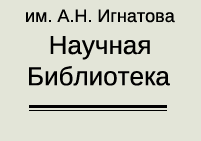 |
НАУЧНАЯ БИБЛИОТЕКА - РЕФЕРАТЫ - Ирландцы и Южная Америка (english) - (реферат)
Ирландцы и Южная Америка (english) - (реферат)
Дата добавления: март 2006г.
The Irish and South America
After the defeat of Napoleon and his armies in Europe, thousands upon thousands of soldiers and sailors found themselves demobbed and at a loose end. From 1817 onwards, for a number of years, many Irish volunteers so discharged elected to serve the newly emerging states in South America, such as in the armies of Simon Bolivar in the fight for the freedom of Colombia. Of the thousands who stout for South America, only hundreds arrived, as shipwreck and disease took a heavy toll. Of the hundreds, many were trained seamen, officers and other ranks, who had volunteered for -- or had been press-ganged into -- the British Navy. Long before the first arrivistes came to join in the South American wars of freedom from centuries of Spanish oppression, there were famous leaders of Irish stock who had helped put the countries of their adoption on the map. The links between Ireland and South America have frequently been forged through soldiers or sailors of fortune offering their services to the emergent South American republics, and yet there have been many links in peacetime. In our time there are many individual Irish missionaries who have volunteered to devote their lives to work among the poor and oppressed in the slums of South American capital cities, and in remote rural areas, where the peasantry are under constant threat of starvation, or worse, labouring under oppressive military regimes. In the years following World War II, the lead was given to newly ordained priests in Cork to go out to serve the poor of South America by the Reverend Archdeacon Canon Duggan of Cork, who was later to die in the South American mission field at the age of seventy-five. Many purely commercial links were forged by the men and women of County Meath who went out to South America, notably to the Argentine, because of their expert knowledge of cattle and cattle breeding. William Bulfin, in his work Rambles in Erin, first published in 1907, about his three-thousand-mile cycle ride throughout the length and breadth of Ireland, recalls the ties between Buenos Aires and Mullingar. On the road to the great cattle town of Mullingar he says: "I was told by a truthful man up the road that one could not see a soul in this part of the country who has not a relation in Argentina. " When the local people heard he had been in Buenos Aires, they crowded around him; "I stayed with them for more than two hours. A few of them remembered their Spanish and plied me with it. There were brothers and sisters of men I had met on the pampas, and nieces and nephews and even parents as well. " Bulfin had emigrated to Argentina &om Galway at the age of seventeen, and had worked as a range hand on the pampas. He became a journalist and edited The Soouthern Cross of Buenos Aires. He returned to Ireland in 1902. South America was a haven of refuge for John Devereux, who fought in the Irish Wexford Rising of 1798, was taken prisoner, and was allowed to go to France. Napoleon offered to create him a general, but he declined, and formed an Irish Brigade, which served in Simon Bolivar's Army of Independence. In his time he was known as the "Lafayette of South America, " and became a general in the army of Venezuela. Simon Boliv~s aide-de-camp and personal secretary was Daniel Floerence O'Leary, who was born in Cork in 1800. He joined a regiment of hussars and fought in the Bolivian War of Independence. He was made minister for Peru for his services, to Brazil, Chile and the Central States of America. He died in Bogota in 1877. While Irishmen fought in South America in support of the new Republics against the old Imperial order of Spain, and fought on both sides of the American Civil War, one of the strangest battles ever fought by Irishmen was in the service of Mexico, against the "Imperial" might of the United States of America. This was in 1847, before Mexico found oil and earned the respect of her northern neighbour. Today, because of an educational system which owes much to the Irish Christian Brothers, many Mexicans are aware of Ireland and her history and every year, on the feast of Saint Patrick, they pay tribute, in Mexico City, to the "mernory of the Irish soldiers of the heroic Saint Patrick's Battalion, martyrs who gave their lives for the cause of Mexico during the unjust North American invasion of 1847. " It is a curious story, and a plaque on the wall in the Plaza San Jacinto, a suburb of Mexico City, names seventy-one Irishmen of the Mexican Saint Patrick's Battalion who were either hanged or imprisoned by the invading United States Army. The names are there for all to read: "O'Reilly, Hanly, Sheehan, Hogan, Delaney, 0'Connor, Nolan, Dalton, Fitzpatrick, Casey, McDowell, Cavanaugh, Cassidy, Daly, Kelly, Murphy " More than 50 were to die by the old-fashioned hangman's rope of the United States Army.
|  |

